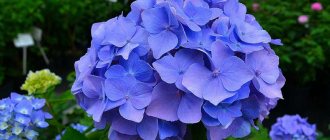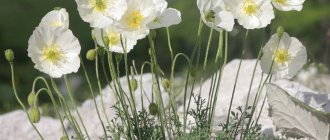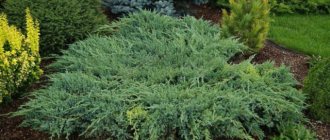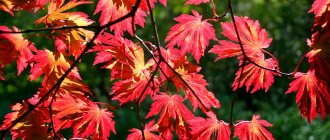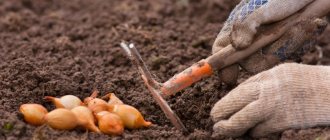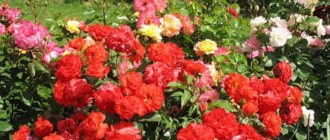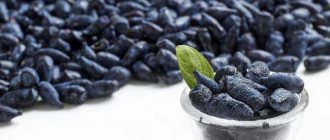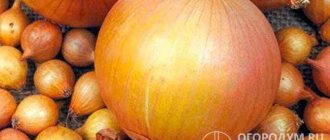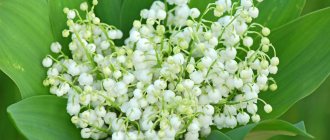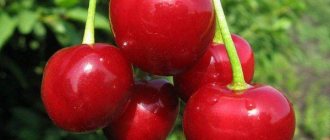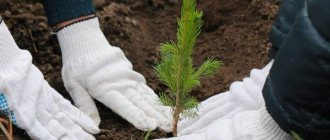Decorative loosestrife is easy to care for, is perfect for our climate and is widely used in landscape design. These plants can easily be planted in flower beds, alpine slides and rockeries, decorating the territory of a summer cottage or private home. Today, there are various hybrids of loosestrife, which differ in the size of the bush, flowering period and appearance of the buds.
Description of the loosestrife
Merlin is also called “weeping grass” - because of its characteristic feature, which manifests itself in the fact that excess moisture from rain or dew collects on the leaves into drops and flows down, reminiscent of dripping tears.
In nature, loosestrife is found in damp places, river banks, damp meadows, near swamps, it is unpretentious, can grow on any type of soil, and under good conditions it grows quickly.
Loosestrife is a herbaceous perennial that belongs to the loosestrife family. It has straight 4-sided stems that stretch up to 0.8-1.4 m and branch in the upper part. The root of the plant is thick and woody, located shallow in the ground. The leaves located on the stem below are predominantly opposite, the upper ones are alternate, 10 cm long, oblong in shape.
It blooms in July-August, its flowers are small, up to 1 cm, star-shaped, numerous. They sit tightly in spike-shaped inflorescences. The flowers of the loosestrife are colored from dark pink to purple. The seeds ripen in August; they are in small oblong-oval boxes.
The loosestrife loves open sunny places
Conditions for growing loosestrife
Merlin in landscape design photo
Loosestrife, or weeping grass, can grow in almost any conditions. But he prefers bright sun and a lot of moisture. Merlin loves to grow in open or slightly shaded areas near ponds or wells. This perennial will decorate any decorative stream, fountain and other places close to water. Merlin can withstand up to 30 cm of flooding. This plant, even in the heat, is not afraid of excess moisture. At the same time, some time of summer drought is not at all scary for the merlin.
But if there are no “wet” places nearby, loosestrife can be planted in a regular flower garden with sufficient watering.
Things are a little more complicated with the choice of soil. Plakun grass will grow well in light, nutritious soil, but a very dry, loose or dense mixture will not suit it. That is why they try to plant the loosestrife near water.
The best varieties of loosestrife
You can plant different varieties of loosestrife in your home plot. From the descriptions of some of them, you can get an idea of what variety you would like to plant.
Loosestrife Rosy Gem
Flowering begins at the end of June and continues until August. The loosestrife "Rosy Gem" grows 0.6-1.2 m in height and reaches 0.7 m in width.
The “Rosie Gem” variety is unpretentious and tolerates drying out of the substrate well.
Derbennik Swirl
Perennial, approximately 0.8 m high. The plant blooms in July and August. The inflorescences of the loosestrife Swirl are loose and airy. They are not similar to those characteristic of other varieties. They are considered a distinctive feature of the variety. In reviews of the Swirl loosestrife, flower growers say that it is easy to determine the varietal affiliation of plants.
Variety "Swirl" grows well in moist soils, recommended for edgings
Lady Sackville
Flowering occurs in July and August, like other varieties of the crop. The stems of "Lady Sackville" are of medium height, ranging from 0.6-0.8 m.
"Lady Sackville" is used in group plantings, various flower beds and near ponds
Gypsy blood
The buds bloom from July to August. The height of the variety “Gypsy Blood” (Zigeunerblut) of bushes is up to 1.2 m.
The “Gypsy Blood” variety can reach a height of up to 120 cm
Blush
The plant reaches a height of 1.2 m. Blush loosestrife blooms, like other varieties, in July and August.
The Blush variety has green foliage in spring and summer, turning red in autumn.
Candle fire
The plant is tall, above 1 m, with dark green foliage. Flowering occurs in July and August.
At the end of summer, the “Candle Fire” variety produces seed pods in place of fading flowers.
Pink pearl
This variety is one of the most common. The plants have elongated leaves and erect, dense inflorescences. The height of the “Pink Pearl” loosestrife is 1-1.2 m. It grows quickly and forms large clumps.
“Pink pearls” do not require special care during cold periods
Robert
The height of Robert bushes is 0.6-0.7 m, width is up to 0.7 m. Flowering occurs in July and August.
The “Robert” variety is best planted in the sun and near water bodies
Diseases and pests
The herbaceous shrub Pink Pearl has high immunity and is practically not affected by fungal and viral diseases. The main pest is green and black aphids, which are recommended to be combated with folk remedies: infusion of garlic, onion peels, tobacco dust. The use of insecticides on honey plants is undesirable - it can lead to the death of bees and bumblebees.
The bushes remain decorative throughout the growing season
Application in landscape design
In the garden, loosestrife is most often used in compositions with other ornamental plants, the flowers of which are painted in cool blue tones, for example, with catnips, geraniums, snowcaps and mordovniks. They look good next to barberry bushes, bladderwort, mock orange, derain or against the background of astilbe, helianthus, saplings, daylilies, asters and Japanese spirea.
Due to the fact that varieties of loosestrife differ in height, width and color of flowers, original compositions can be created from several of these varieties. At the same time, plants need to be planted so that there are no sharp transitions from one color to another; on the contrary, they should be smooth. Then the flower arrangement will look more advantageous.
Plakun grass - what kind of plant is it?
The plant, known as weeping grass, is also called linnet, grandfather's beard, and lake linnet. Its leaves are similar to willow leaves, but have stomata that release excess water when humidity is high. But not only for the ability to “cry” people awarded it with miraculous properties; this perennial contains many valuable substances that help overcome a variety of ailments.
What does weeping grass look like?
The botanical name is loosestrife, lythrum salicaria, translated from Greek as “clotted blood.” This confirms that even in Ancient Greece they knew about the ability of this plant to heal even severe wounds. The perennial is distinguished by burgundy, two-meter stalks and pink inflorescences, and the leaves change color from green to purple from the beginning of September.
Methods of propagation of loosestrife
Loosestrife, grown in home gardens, is propagated in three ways: cuttings, dividing the bush and seeds. Cuttings are cut from the lower parts of the stems, cut off in the first half of summer. Root in a moist substrate, under a film. The cuttings are watered, keeping the soil moist, and the soil is loosened after irrigation. Merlins are planted in a permanent place in the fall, a month before the onset of cold weather. Adult specimens are propagated by dividing the bush. In the spring before the beginning of the growing season or in mid-autumn, they are dug up, a part of the rhizome is separated with a sharp shovel, which is immediately replanted. The root cut is sprinkled with ash and then covered with earth.
Planting loosestrife seeds in open ground is carried out in October. Over the winter they will undergo natural stratification and sprout on their own in the spring when needed.
Attention! When propagating by seeds, you need to keep in mind that such plants bloom only after 2-3 years.
Planting willow loosestrife in the ground
Plants grown from seeds are transplanted into a flowerbed or other parts of the garden. This must be done within a certain time frame.
Recommended timing
Seedlings are planted in open ground in May, when they will definitely not be affected by temporary cold snaps. It is not advisable to replant later, as it will outgrow it.
Site selection and preparation
Loosestrife prefers moist soil, so it is best to plant it in gardens near artificial ponds, as it likes to grow in moist soil. But, if there is no water nearby, the plants will feel good in ordinary soil.
Soil preparation for willow-like loosestrife of any variety is standard: the area is cleared of plant debris, dug up, and organic matter or mineral fertilizers are applied. Mix the soil with them and level the surface, dig holes in it at a distance of 0.4 m. This interval must be maintained between the bushes so that they can develop normally and not interfere with each other when they bloom.
Landing algorithm
Planting loosestrife in open ground and initial care for it consists of the following actions:
- The holes are watered and one plant is planted in them.
- Sprinkle with earth and lightly compact it around the stems.
- You can sprinkle the surface of the soil with a thin layer of mulch.
In the photo you can see the planting and the first stage of caring for loosestrife.
To be planted on a site, loosestrife seedlings must have at least 4-5 true leaves
Where and how does it grow
Despite the extensive description and variety of varieties, many types of loosestrife are found in the same area. The perennial plant grows extensively in North Africa, eastern Australia, throughout Europe and Asia. You can also find Blush loosestrife and other plant varieties on the territory of the Russian Federation, with the exception of the Arctic regions.
In most cases, loosestrife grows along the banks of various bodies of water and is located along the outskirts of swamps. This is due to the fact that the loosestrife prefers moist and damp areas with plenty of sunlight and nutritious soil.
A fairly useful perennial plant is loosestrife, a photo and description of which you could view above in the article. Merlin is especially widely used in folk medicine, and all parts of the plant are used without exception. After blooming, the flowers can be dried and processed, then medicinal tinctures and decoctions can be prepared from them. With the help of loosestrife inflorescence, you can relieve headaches, eliminate symptoms of respiratory tract diseases and overcome many other pathologies.
Many medications contain loosestrife, which is also known as the weeping herb. If you use the entire part of the merlin to prepare infusions and decoctions, you can get rid of various diseases of the gastrointestinal tract and eliminate neuroses.
Features of care
Like other plants, willow-like loosestrife needs to be watered, fed, pruned and prepared for wintering in the fall. All these works are included in the complex of agrotechnical measures to care for it.
Watering and fertilizing schedule
Weeping grass does not tolerate drought well, so you need to take watering seriously. During periods of lack of rain, irrigation must be carried out regularly so that the earthen ball does not dry out. If the loosestrife grows near water, you can water it less often.
Willow loosestrife is fed every year in the spring with complex mineral fertilizers for flowering crops. Additionally, cover the soil with peat or humus, which also provides useful substances.
Weeding, loosening, mulching
After watering, a day or two later, you need to loosen the soil. This is necessary so that air can pass to the roots. To preserve soil moisture, it is necessary to cover the soil surface with mulch. You can use peat and old humus.
Despite the fact that loosestrife bushes are very tall and voluminous, they will not grow in weeds. All unwanted vegetation should be removed during routine weeding.
Trimming
After flowering ends, most of the flower stalks are cut off. This will prevent seeds from forming and prevent self-seeding, as well as give the plants a more attractive appearance. A few inflorescences are left to obtain seeds from them if needed. In autumn, remove all dry shoots, cutting them at the root.
After flowering, all peduncles are cut off
Wintering
The loosestrife does not need special shelter. After pruning, it is enough to sprinkle the plant with peat or humus, leaves or straw. In the spring, after the snow melts, the mulch must be removed.
Pests and diseases
The most common pest of loosestrife is aphid. It settles on the leaves and tops of stems and sucks the juice from them. To prevent the appearance of the pest, plants are sprayed with garlic, tobacco, onion or citrus infusions. If the loosestrife is severely affected, synthetic insecticides can come to the rescue.
Contraindications
This herbaceous crop can provide not only benefits. For certain diseases, it is strictly prohibited to take:
- in old age;
- with high blood clotting (consumption can lead to the formation of blood clots);
- with senile constipation;
- with gastric atony.
Also, people with high blood pressure should use the plant with caution in treatment - the plant has the ability to constrict blood vessels.
Medicinal properties
The plant has the following actions:
- antibacterial;
- anti-inflammatory;
- astringent;
- wound healing;
- hemostatic;
- diuretic;
- analgesic;
- tonic;
- restorative.
As you can see, the medicinal properties of loosestrife, which is shown in the photo, allow it to be used to treat many problems in the body. It treats and prevents diseases, infections, stops bleeding, relieves pain, tones and strengthens the body.
Use in folk medicine
Planting and caring for loosestrife (pictured) is beneficial not only because it is an ornamental plant, but also because products from it can be used for the treatment and prevention of diseases.
A paste of leaves and fresh rhizomes is applied to wounds to stop bleeding. Decoctions and tinctures will help with inflammation of the gastrointestinal tract and upper respiratory tract of a chronic nature, as well as with nervous diseases, epilepsy, as an antidote to insect and snake bites. The decoction is also used externally - they take baths with it, make compresses and rinses for skin diseases, including purulent ones. Alcohol tincture is used for pain in the head and stomach, colds, rheumatism and toxicosis.
The leaves and flowers of loosestrife are used to treat a wide variety of diseases.
Recipes
A description of the preparation of products based on merlin will help you make them at home. To do this you will need fresh or dry grass, flowers and roots.
Decoction
For 100 ml of water take 2 tsp. dry herbs, steam it in a water bath for 30-45 minutes. Then keep wrapped for another 20 minutes. Drink 0.5 glasses three times a day.
Infusion
It is prepared from 1 tbsp. warm water and 1 tbsp. l. fresh or dry raw materials. Leave for at least 6 hours.
Tincture
It is prepared from 50 g of raw materials and 0.5 liters of vodka. Infuse the product for 10 days. Drink 40 drops 3 times a day.
Tea
Loosestrife tea is prepared by brewing 1 tbsp in one glass of boiling water. l. leaves and flowers. Leave for 0.5 hours and drink a quarter glass 30 minutes before eating.
Rules of application
To treat diseases of internal organs, drink freshly prepared decoctions and infusions; they can be stored in the refrigerator for 3 days and heated to a comfortable temperature before use. Tea should be prepared for one serving and drunk fresh. Rubbing alcohol tincture should also be kept in the refrigerator. Apply 1-2 times a day.
Weeping grass
In their legends, attributed miraculous properties to many plants, but the Slavs considered plakun-grass, gap-grass and Perun’s flower, commonly known as fern flower, to be truly magical herbs.
Weeping grass is the popular nickname for loosestrife (Lythrum salicaria L.), which belongs to the loosestrife family. It is a perennial plant with rhizomes and clusters of lilac-pink flowers grouped into inflorescences. Plakun grass can grow up to 2 meters in height.
From Greek, the generic name of the plant can be translated as “spilled, coagulated blood.” It is believed that loosestrife is able to stop bleeding. The species name salix, translated willow, was given to the loosestrife for the similarity of its leaves to a tree.
The plant received the more popularly known name “plakun-grass” for two reasons - due to its structure and Slavic myth . In the covering tissues of the grass there are special organs with the help of which the loosestrife gets rid of excess moisture that comes from the ground. Therefore, the more humid and warmer the air, the more droplets are released: they flow down the leaves and look like tears from the outside.
According to the legend of our ancestors, weeping grass was used in conspiracies against evil spirits: by making it cry, people gained wealth and power over the world of spirits, destroyed the spells of witches and treated diseases. A cross made of weeping grass was placed on people from whom demons were cast out. They also put loosestrife on sleepless children and took them with them to the swamp to ward off unclean spirits. One of the spells sounded like: “There is a grass named Plakun, it grows near rivers and lakes, it is tall like hemp, the color of crimson... Its flowers are like a torch, and in the morning it cries with bright tears.”
Some beliefs explain the magical power of the grass as follows: the tears of the Virgin Mary, who mourned the crucifixion of Jesus, falling to the ground, turned into weeping grass . The Slavs believed that when collecting herbs for the holiday of Ivan Kupala, it was necessary to pick plakun-herbs, as it enhanced the magical properties of plants.
We collected weeping grass early in the morning on Midsummer's Day. It was necessary to remove all iron from oneself, otherwise the dug up grass root would not have magical powers. The collected grass was kept clean and fed to livestock.
The great Russian writer A.K. Tolstoy, in his novel “Prince Silver,” mentioned the weeping grass in the episode where the miller gave advice to Vyazemsky: “There is also the weeping grass, if you cut a cross out of the root and hang it around your neck, everyone will be afraid of you like fire.”
In the modern world, loosestrife has found its use in medicine: it is used for gastritis, enterocolitis and dysentery. At home, the roots and, to a lesser extent, herbs are used to treat stomach pain, bleeding in the abdomen, cardiovascular diseases, and sometimes epilepsy and noises in the head. The herb powder is sprinkled on non-healing wounds for speedy healing.
Collection and procurement of raw materials
If stems and leaves are needed, then they are harvested before the flowering period, inflorescence - when most of the buds open on them. At this time, the most medicinal substances accumulate in them.
You need to cut off the inflorescences and grass of the loosestrife before or during flowering.
The roots are dug up after flowering or in the fall, when the plant ends the growing season. They are cleaned of any remaining soil, washed, cut into small pieces and dried. The grass is also dried in the shade or in a ventilated area until completely dry. Store raw materials in a dark and cool place, in linen or paper bags. The shelf life of the herb is no more than 1 year; the roots can be stored for a season longer.
